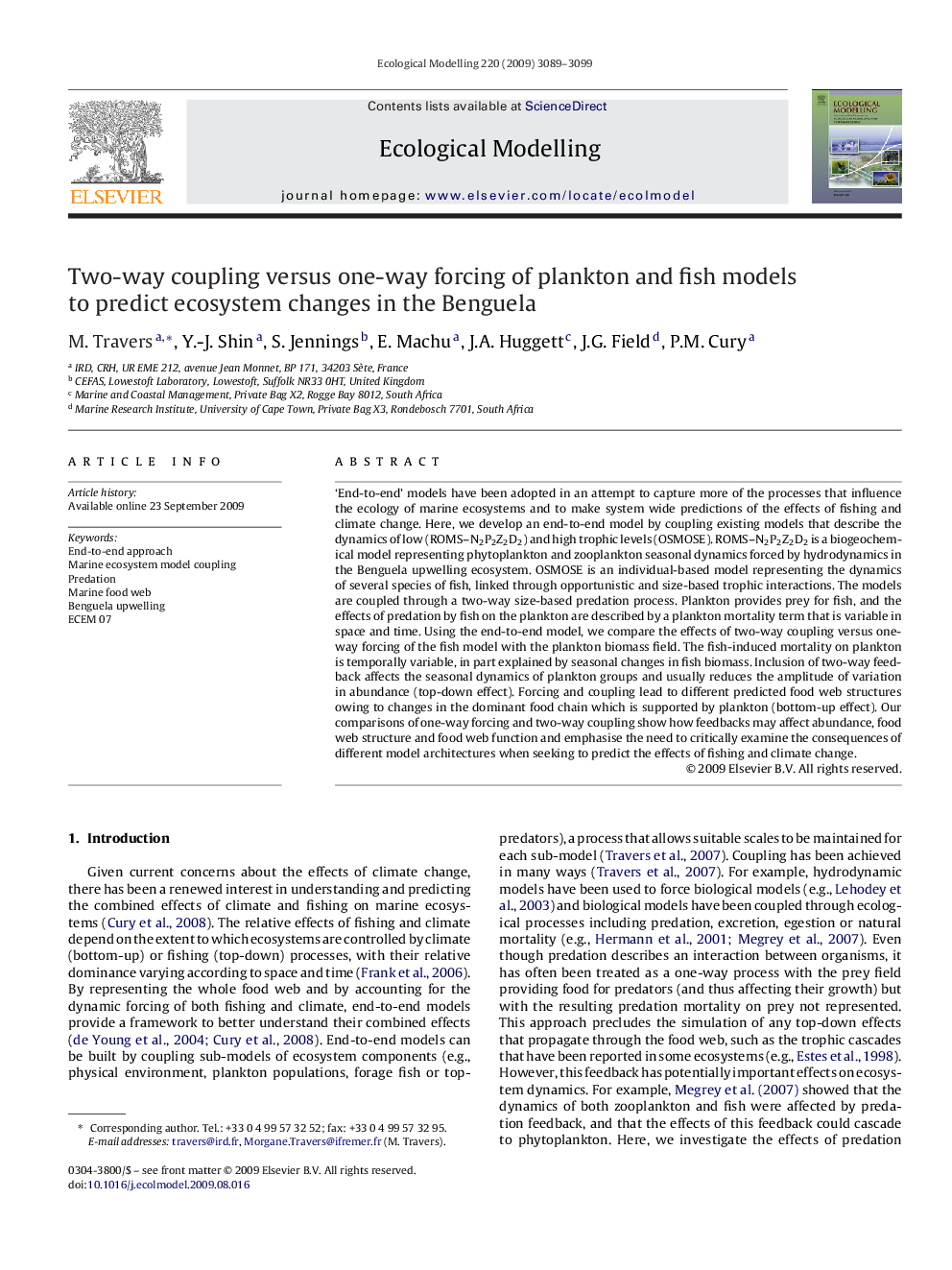| Article ID | Journal | Published Year | Pages | File Type |
|---|---|---|---|---|
| 4377648 | Ecological Modelling | 2009 | 11 Pages |
Abstract
'End-to-end' models have been adopted in an attempt to capture more of the processes that influence the ecology of marine ecosystems and to make system wide predictions of the effects of fishing and climate change. Here, we develop an end-to-end model by coupling existing models that describe the dynamics of low (ROMS-N2P2Z2D2) and high trophic levels (OSMOSE). ROMS-N2P2Z2D2 is a biogeochemical model representing phytoplankton and zooplankton seasonal dynamics forced by hydrodynamics in the Benguela upwelling ecosystem. OSMOSE is an individual-based model representing the dynamics of several species of fish, linked through opportunistic and size-based trophic interactions. The models are coupled through a two-way size-based predation process. Plankton provides prey for fish, and the effects of predation by fish on the plankton are described by a plankton mortality term that is variable in space and time. Using the end-to-end model, we compare the effects of two-way coupling versus one-way forcing of the fish model with the plankton biomass field. The fish-induced mortality on plankton is temporally variable, in part explained by seasonal changes in fish biomass. Inclusion of two-way feedback affects the seasonal dynamics of plankton groups and usually reduces the amplitude of variation in abundance (top-down effect). Forcing and coupling lead to different predicted food web structures owing to changes in the dominant food chain which is supported by plankton (bottom-up effect). Our comparisons of one-way forcing and two-way coupling show how feedbacks may affect abundance, food web structure and food web function and emphasise the need to critically examine the consequences of different model architectures when seeking to predict the effects of fishing and climate change.
Related Topics
Life Sciences
Agricultural and Biological Sciences
Ecology, Evolution, Behavior and Systematics
Authors
M. Travers, Y.-J. Shin, S. Jennings, E. Machu, J.A. Huggett, J.G. Field, P.M. Cury,
